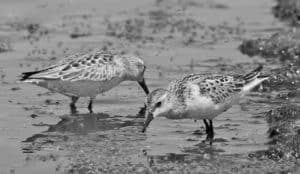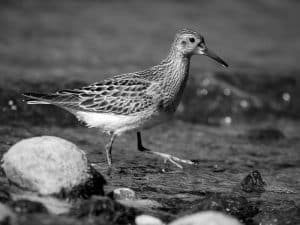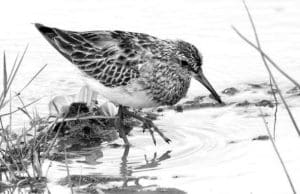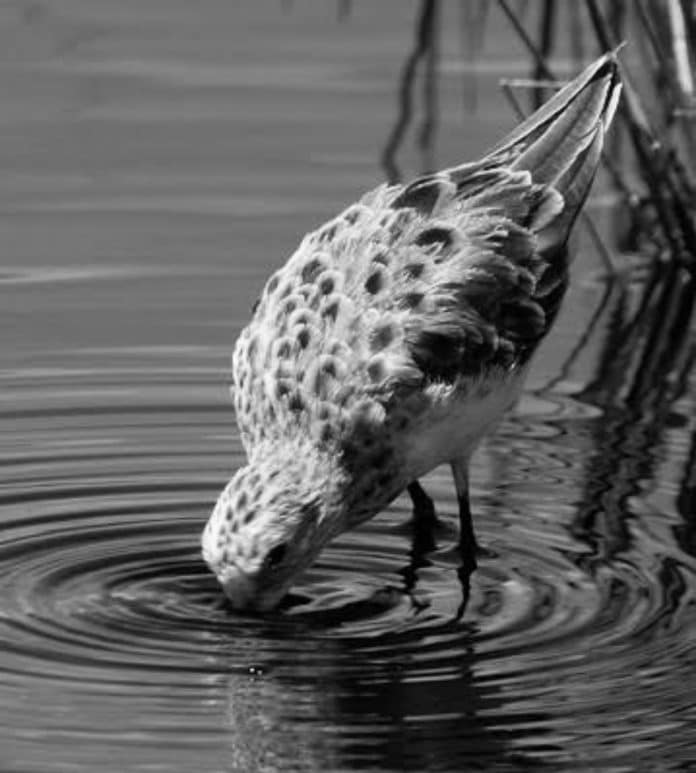Introduction to the Little Stint in Tanzania
The Little Stint in Tanzania is a small migratory bird that captivates birdwatchers and nature enthusiasts alike with its delicate appearance and remarkable behavior. In Tanzania, this charming species finds its home in the wetlands, where it thrives in the diverse and abundant ecosystem. From its unique characteristics to its impressive migration patterns, the Little Stint in Tanzania offers a fascinating subject for exploration. In this article, we will delve into the world of the Little Stint, uncovering its habitat, identifying its distinguishing features, understanding its migration patterns, and exploring the efforts undertaken to conserve this enchanting species.
The Habitat of the Little Stint in Tanzania

The wetlands of Tanzania provide an ideal habitat for the Little Stint. These wetland areas are characterized by a mix of freshwater and saltwater, creating a dynamic environment that supports a rich diversity of plant and animal life. The Little Stint is often found in coastal areas, estuaries, and shallow marshes, where it can forage for its preferred food source – small invertebrates such as insects, crustaceans, and mollusks. These wetland habitats also offer protection from predators and serve as important stopover sites for the bird during its long migratory journey.
Unique Characteristics of the Little Stint in Tanzania
Despite its diminutive size, the Little Stint possesses several unique characteristics that set it apart from other bird species. It measures approximately 14-16 centimeters in length, with a wingspan of around 28-30 centimeters. The Little Stint displays sexual dimorphism, with males typically sporting more vibrant plumage during the breeding season. Its plumage is predominantly brown on the upperparts, with white underparts and a distinct white eyebrow stripe. The bird’s short bill and legs are perfectly adapted for probing the soft mud in search of food. Additionally, the Little Stint is known for its swift and agile flight, often darting low over the water’s surface in pursuit of prey.
Migration Patterns of the Little Stint in Tanzania
The Little Stint is a remarkable migratory bird, embarking on long journeys across continents in search of suitable breeding and wintering grounds. In Tanzania, these birds are primarily found during the non-breeding season, as they take advantage of the abundant food resources in the wetlands. During the breeding season, which typically occurs in the Arctic tundra, the Little Stint travels over vast distances, sometimes covering up to 15,000 kilometers. These migratory journeys are a testament to the bird’s endurance and navigational abilities, as they traverse challenging landscapes and navigate using celestial cues and landmarks.
Conservation Efforts for the Little Stint in Tanzania

Recognizing the importance of preserving the wetland habitats that support the Little Stint and other bird species, various conservation efforts have been undertaken in Tanzania. The government has established protected areas and national parks that encompass significant wetland ecosystems, providing a safe haven for the Little Stint and fostering biodiversity conservation. Local and international organizations collaborate to conduct research, monitor populations, and raise awareness about the importance of wetland conservation. These efforts aim to safeguard the habitats and mitigate threats such as habitat loss, pollution, and climate change, ensuring the long-term survival of the Little Stint and its fellow wetland inhabitants.
Best Places to Spot the Little Stint in Tanzania
Tanzania offers several prime locations for spotting the Little Stint in its preferred wetland habitats. One such place is the Rufiji Delta in the Selous Game Reserve, located along the country’s southern coast. This vast wetland area provides ample opportunities for birdwatchers to observe the Little Stint as it forages along the riverbanks and shallow pools. The Kilombero Valley floodplain, near the Udzungwa Mountains National Park, is another excellent spot to encounter the Little Stint. This expansive wetland area is teeming with birdlife, offering a glimpse into the intricate web of ecosystems that support these remarkable creatures.
Tips for Birdwatching the Little Stint in Tanzania
When embarking on a birdwatching adventure to spot the Little Stint in Tanzania, there are a few tips to enhance your chances of a successful encounter. Firstly, it is advisable to visit during the non-breeding season, typically from August to April, as this is when the Little Stint is most likely to be present in the wetlands. Secondly, carrying a pair of binoculars or a spotting scope will allow you to observe the bird’s behavior and distinguishing features more closely. Lastly, it is essential to respect the natural environment and adhere to local guidelines to minimize disturbance to the birds and their habitats.
Other Bird Species Found in the Same Habitat as the Little Stint in Tanzania
The wetlands of Tanzania are not only home to the Little Stint but also host a plethora of other bird species. One such species is the African Fish Eagle, an iconic bird renowned for its striking appearance and impressive fishing skills. The Great White Pelican, with its enormous size and graceful flight, is another bird commonly found in these wetland habitats. The Black Heron, with its unique feeding behavior of creating shade with its wings to attract fish, is a fascinating sight to behold. Exploring the wetlands of Tanzania offers an opportunity to witness the captivating interactions between these diverse bird species.
Recommended Resources for Learning More about the Little Stint in Tanzania
For those interested in delving deeper into the world of the Little Stint in Tanzania, there are several recommended resources to aid in further exploration. Bird field guides specific to Tanzania, such as “Birds of East Africa” by Terry Stevenson and John Fanshawe, offer comprehensive information on the region’s avian species, including the Little Stint. Online platforms like eBird and BirdLife International provide valuable data, maps, and articles related to bird distribution and conservation efforts. Local birdwatching associations and nature centers in Tanzania can also provide guidance, organize guided tours, and share insights from experienced birdwatchers.
Conclusion

The Little Stint in Tanzania is a true wetland gem, captivating all who encounter it with its delicate beauty and remarkable behaviors. Its presence in the diverse wetland habitats of Tanzania serves as a reminder of the importance of conserving these critical ecosystems. By understanding the Little Stint’s habitat, unique characteristics, migration patterns, and the efforts undertaken to protect it, we can appreciate the significance of this enchanting species. So, grab your binoculars, explore the wetlands of Tanzania, and embark on an awe-inspiring journey to witness the Little Stint in all its glory.

































